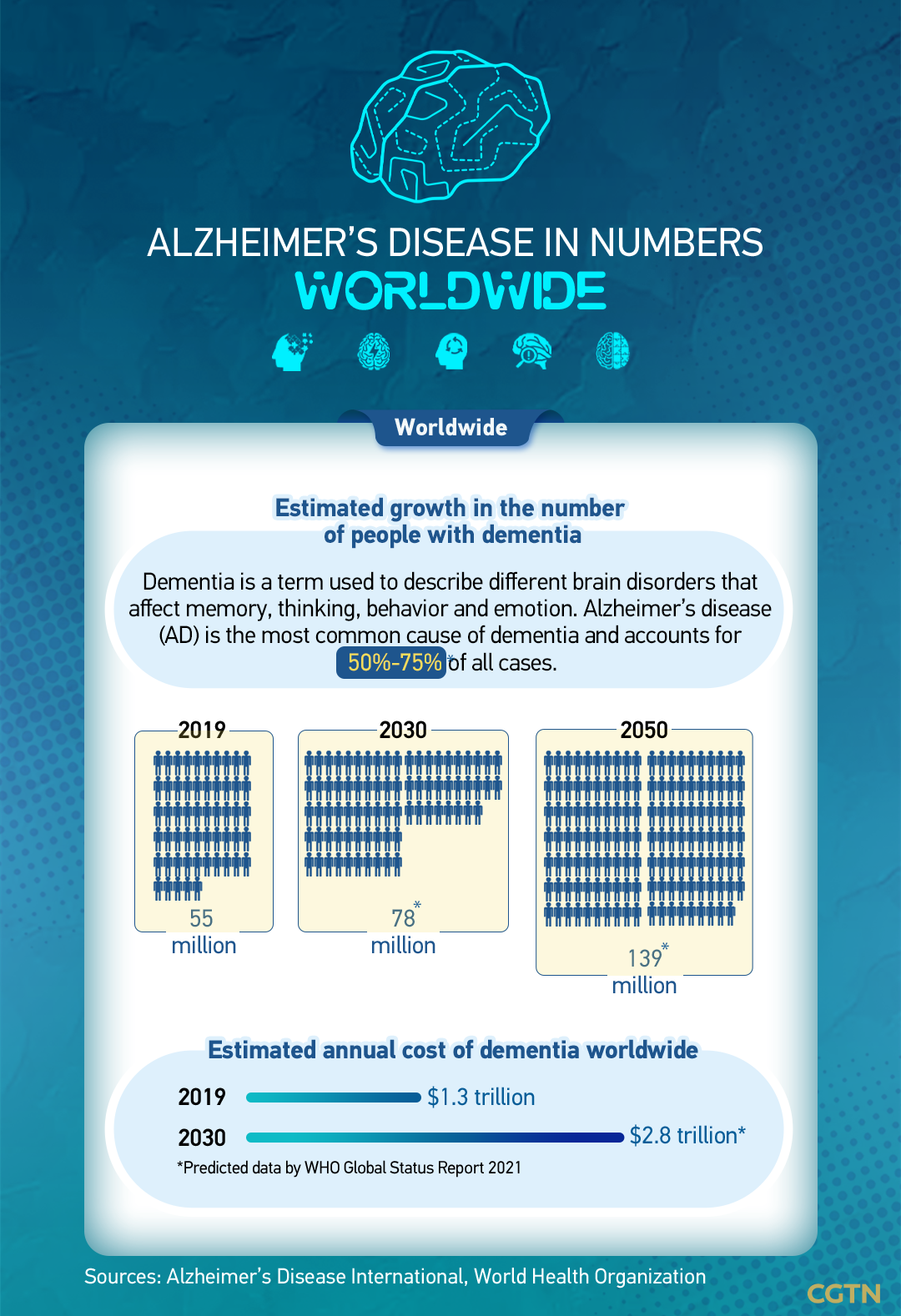Chart of the Day: How serious is Alzheimer’s disease?

[ad_1]
Thursday marks the 30th World Alzheimer’s Day.
Alzheimer’s disease (AD) is an irreversible, progressive brain disorder that slowly destroys memory, thought capability and the ability to carry out simple tasks.
AD is the most common cause of dementia, accounting for 50 percent to 75 percent of all cases, according to the World Health Organization (WHO). Typically, AD begins with memory lapses, difficulty finding the right words for everyday objects or mood swings.

According to the Alzheimer’s Disease International, the number of people living with dementia worldwide reached 55 million in 2020. This number will almost double every 20 years, reaching 78 million in 2030 and 139 million in 2050.
The estimated annual cost of dementia worldwide reached $1.3 trillion in 2019 and is expected to rise to $2.8 trillion by 2030, according to the WHO Global Status Report 2021.

China has an increasingly aging population, and the increasing prevalence of AD has emerged as a major challenge in China. In 2019, the number of people with AD and related dementias (ADRD) increased to over 13 million, and about 10 million people aged 60 and above have Alzheimer’s, according to “The China Alzheimer Report 2022.” In 2019, AD rose to the fifth leading cause of death in China, climbing five places in the past 30 years.
The statistics also mentioned that the estimated annual cost of AD treatment in China reached $248.7 billion in 2019 and is expected to rise to approximately $1.9 trillion by 2050.
China is taking steps to raise public awareness of the disease and guide the elderly population to pay attention to their brain health. Earlier this year, health authorities in China launched a nationwide campaign that will be carried out from 2023 to 2025 to promote the prevention and treatment of AD.
[ad_2]
Source link

